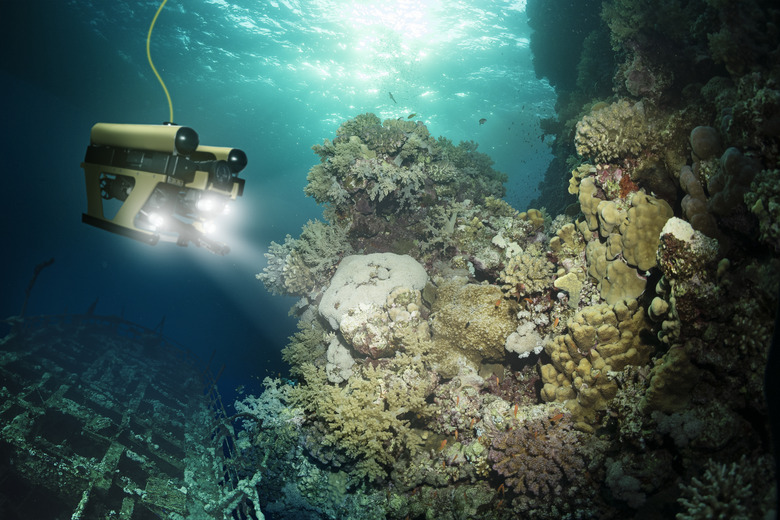Animals Of The Abyssal Ecosystem
The region of the ocean that lies between 3,000 and 6,000 meters (or 9,800 and 19,700 feet) below the ocean's surface is called the abyssal zone. Temperatures here are frigid and pressures are hundreds of times greater than those at the ocean's surface. The abyssal zone is a strange, harsh world that seems ill-adapted to support life. But life has found ways to thrive here, nonetheless.
Food
Food
Photosynthesis in the ocean takes place in the sunlit upper layers. When organisms living in these upper layers die, their remains slowly drift down toward the ocean floor like soft snow. The animals of the abyssal plain rely on this detritus for their food. Some of them rely on it directly, while others eat organisms that eat detritus. The one exception to this is found around rifts where tectonic plates are spreading apart and new seafloor is being formed. In these areas, some species of bacteria can harness chemical energy to make their own food, and in turn, become food for other abyssal animals like tube worms. Many of these bacteria, for example, convert hydrogen sulfide to sulfate and store the energy extracted from this reaction as chemical energy by synthesizing carbon-based compounds.
Species
Species
The depths of the ocean are ill-explored, so it's not currently known how many species inhabit the abyssal ecosystem. When scientists collect abyssal specimens for study, they very frequently find species that are completely new to science. Compared to continental shelves, the deep sea is also very sparsely inhabited, largely because the availability of food is so limited. The animals that live here have very slow metabolic rates due to the frigid temperatures of the ocean water and they only eat occasionally — sometimes as seldom as once every few months. The long, pinkish-colored hagfish, for example, can go as long as seven months without eating because their metabolism is so slow.
Characteristics
Characteristics
The animals of the abyssal plain belong to the same groups as the animals of the continental shelf; you can find octopi, squid, fish, worms and mollusks there. But the animals of the abyssal plain tend to have special adaptations to help them cope with their unusual environment. Most animals in the abyssal plain tend to be small, for example, but they usually have large, flexible stomachs and big mouths. Since food is hard to find, they need to swallow as much as they can when they find it — and preferably store some of it, because their next meal could be a long time coming. The viperfish, for example, has a hinged skull it can rotate upwards so it can eat large fish, an oversized stomach to store plenty of food, and a ferocious-looking set of fangs to chomp down on its prey.
Special Features
Special Features
Many abyssal animals are bioluminescent, meaning they can produce their own light. This capability is important because the deep sea is completely dark, and the ability to produce light can help fish lure their prey, find prey or attract mates. Often they have special adaptations to help them reproduce, because finding mates in the dark and sparsely-populated world of the abyssal plain can be a challenging task. Male anglerfish, for example, literally attach themselves physically to the female, using her blood for food, like a parasite, and fertilizing her eggs in return.
Cite This Article
MLA
Brennan, John. "Animals Of The Abyssal Ecosystem" sciencing.com, https://www.sciencing.com/animals-abyssal-ecosystem-19407/. 9 March 2018.
APA
Brennan, John. (2018, March 9). Animals Of The Abyssal Ecosystem. sciencing.com. Retrieved from https://www.sciencing.com/animals-abyssal-ecosystem-19407/
Chicago
Brennan, John. Animals Of The Abyssal Ecosystem last modified August 30, 2022. https://www.sciencing.com/animals-abyssal-ecosystem-19407/
